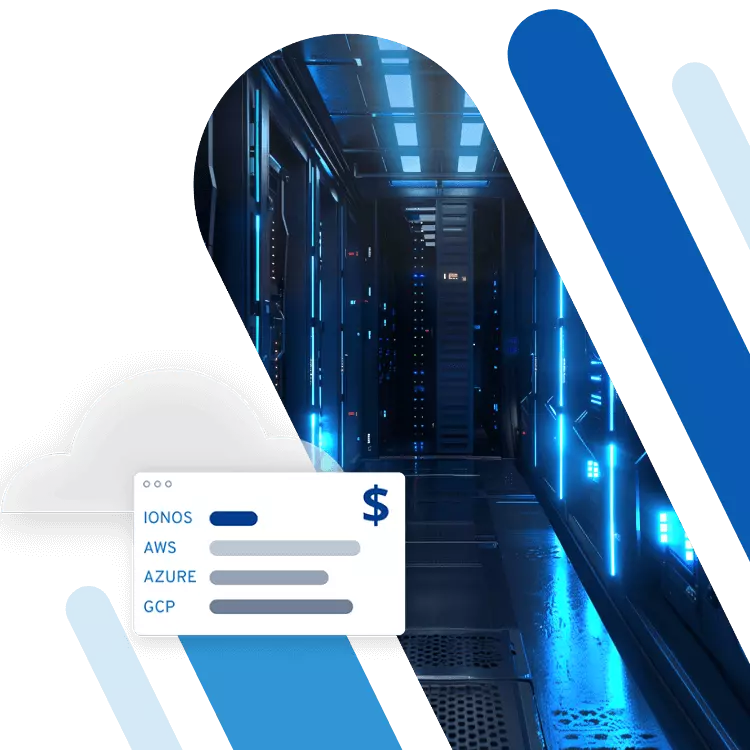What is a disk operating system (DOS)?
DOS served as the basis for the first widely used operating system. Disk operating systems made personal computers workable using data reading and data storage on floppy disks. Computers could be controlled with a simple text-based command line, making DOS not only user friendly but also efficient and highly functional.
The development of DOS (disk operating system)
After Bill Gates found out that IBM was looking for an alternative operating system to the one it had originally planned, he bought the rights to QDOS (Quick and Dirty Operating System) from a small software company. IBM acquired the license from Microsoft and integrated it into the IBM PC as PC-DOS 1.0.
PC-DOS took inspiration from CP/M (the operating system IBM had originally planned) and Unix but was found to be lacking in its execution. It turned out to be a rather poorly programmed operating system, leading Microsoft to completely reprogram it. PC-DOS 2.0 then came to market as the first reasonably functioning operating system.
Since IBM did not have an exclusive license for the operating system, Microsoft could also sell it to other companies. Under the name MS-DOS, it became one of the most popular operating systems of its time. In 1982, over 50 companies had licensing agreements for Microsoft’s disk operating system.
As time went on, DOS users asked more and more of their graphical user interface (GUI). Microsoft fulfilled this wish in 1985 with Windows 1.0, which imitated the GUI developed by Xerox back in the 1970s. Apple also launched with a GUI around this time. Users thus no longer had to type commands to open programs - they could simply click on an icon with their mouse.
DOS: Well-known examples
CP/M and PC-DOS/MS-DOS aren’t the only well-known disk operating systems. Other widely used DOS include:
- Commodore DOS: Commodore DOS was developed in 1977 and is located on the disk rather than in the computer, setting it apart from most other disk operating systems. This actually makes it a firmware rather than an operating system.
- Apple DOS: Back in the day, Apple computers were only compatible with audio cassettes. In 1978, Apple expanded its functionality and integrated the Apple DOS into the Apple II computer. After the introduction of 16-bit architecture, Apple DOS gave way to GS/OS and eventually developed into the macOS that’s used today.
- AmigaDOS: AmigaDOS made use of innovative approaches such as microkernel architecture and addable device drivers, which are still used in modern operating systems. The operating system has its origins in Cambridge University’s multiuser system TRIPOS.
- Atari DOS: What made the Atari DOS special was the integrated memory-resident kernel in version 2.0. With version 4.0, Atari DOS became freely accessible as part of the public domain, meaning that there are countless derivatives of Atari programmed by third-parties.
How does DOS work?
DOS handles information and commands using batch files and can thus process data internally. When a user starts their computer, the system processes it in a batch file, which is contained in the self-executing file autoexec.bat. The file checks all system components and monitors the startup process. Once autoexec.bat has finished processing the batch file, a blinking cursor appears, and the user can enter commands using their keyboard.
Basic commands in DOS
After the computer has successfully booted DOS, the command line interpreter COMMAND.COM will start automatically. Users can then enter commands using the keyboard. Many important commands are already integrated into DOS. The interpreter will search for unknown commands in files with endings like “.EXE”, “.COM” or “.BAT”.
Here are some of the most basic disk operating system commands:
| Command | Type | Explanation |
|---|---|---|
| CD <Directory-name> | Internal | Changes to the directory specified. If you enter a backslash “\” before the directory name, the DOS will interpret the command with respect to the current directory. Backslashes are also used to separate directory names. |
| DEL <File-name> | Internal | Deletes one or more files. |
| DELTREE <Directory-name> | External | Deletes the entire directory, including all contents and sub-directories. |
| MD <Directory-name> | Internal | Creates a new directory with the name indicated. |
You can find an extensive list of DOS commands in our article “DOS Commands: A overview of the most important commands”.
DOS today
Windows 95 heralded the end of the DOS era. After that, the disk operating system lost in significance with each new version of Windows. Modern Windows systems do still support MS-DOS, but users only turn to it in special cases. If you want to open older DOS programs, you should use an emulator, which will recreate the old architecture.

